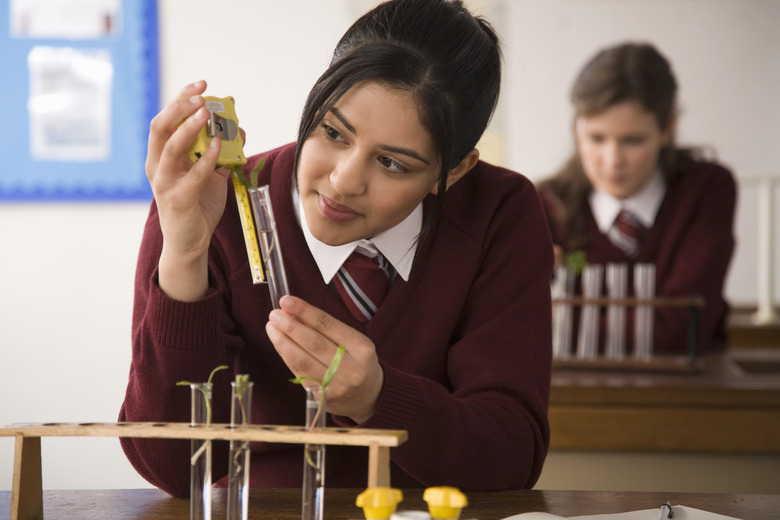How To Measure Conductivity In Water
Conductivity is a measure of how well a material conducts electricity. In water, electricity is conducted by the available ions, or electrolytes, dissolved in the water. Thus, measuring the conductivity of water from different sources can indicate the concentration of electrolytes therein. For this reason, conductivity can also be a measure of water quality, as many minerals and runoff from fertilizers produce ions that increase conductivity. Measure the conductivity of water from several sources to determine how much they vary in ion content.
Collect Water Samples
Step 1
Select several locations from which to collect water. To do a thorough environmental survey, collect the water from several locations in the same waterway.
Step 2
Label vials with date, time, location, and collection depth before collecting. Do not put the labels on the vials.
Step 3
Collect samples by dunking the vials in the waterway. Allow the flow of water to resume before removing each vial and capping it.
Step 4
Wipe the vials dry and apply the labels.
Measure the Conductivity of the Water Samples
Step 1
Allow all water samples to equilibrate to room temperature. Also equilibrate a distilled or deionized-distilled sample for a control sample.
Step 2
Before measuring conductivity, follow the manufacturer's directions on establishing a baseline for the conductivity meter. Conductivity is frequently reported in Siemens per meter or microSiemens per meter. If a meter has multiple choices for reported units, use one of these.
Step 3
For comparison purposes, use a meter to determine the conductivity of distilled or deionized-distilled water. This value will serve as a baseline to compare the other measurements to.
Step 4
Measure the conductance of each water sample using the conductivity meter. Between samples, wash electrode(s) with clean water and carefully wipe them dry. If samples contain debris, allow the particles to settle. If a meter has separate electrodes, be sure that they are kept the same distance from either other in each sample and as still as possible.
Things Needed
- Conductivity meter
- Small vials for collection
- Vial labels
- Waterproof pen
- Deionized water
- Lint-free wipes
- Room thermometer
TL;DR (Too Long; Didn't Read)
To gain a broad survey, collect water from several locations as well as from some of the same locations at different points in time, either times of the year or during droughts or after heavy rainfall.
References
Cite This Article
MLA
Tan, Dr. Alex. "How To Measure Conductivity In Water" sciencing.com, https://www.sciencing.com/measure-conductivity-water-5897045/. 24 April 2017.
APA
Tan, Dr. Alex. (2017, April 24). How To Measure Conductivity In Water. sciencing.com. Retrieved from https://www.sciencing.com/measure-conductivity-water-5897045/
Chicago
Tan, Dr. Alex. How To Measure Conductivity In Water last modified March 24, 2022. https://www.sciencing.com/measure-conductivity-water-5897045/
